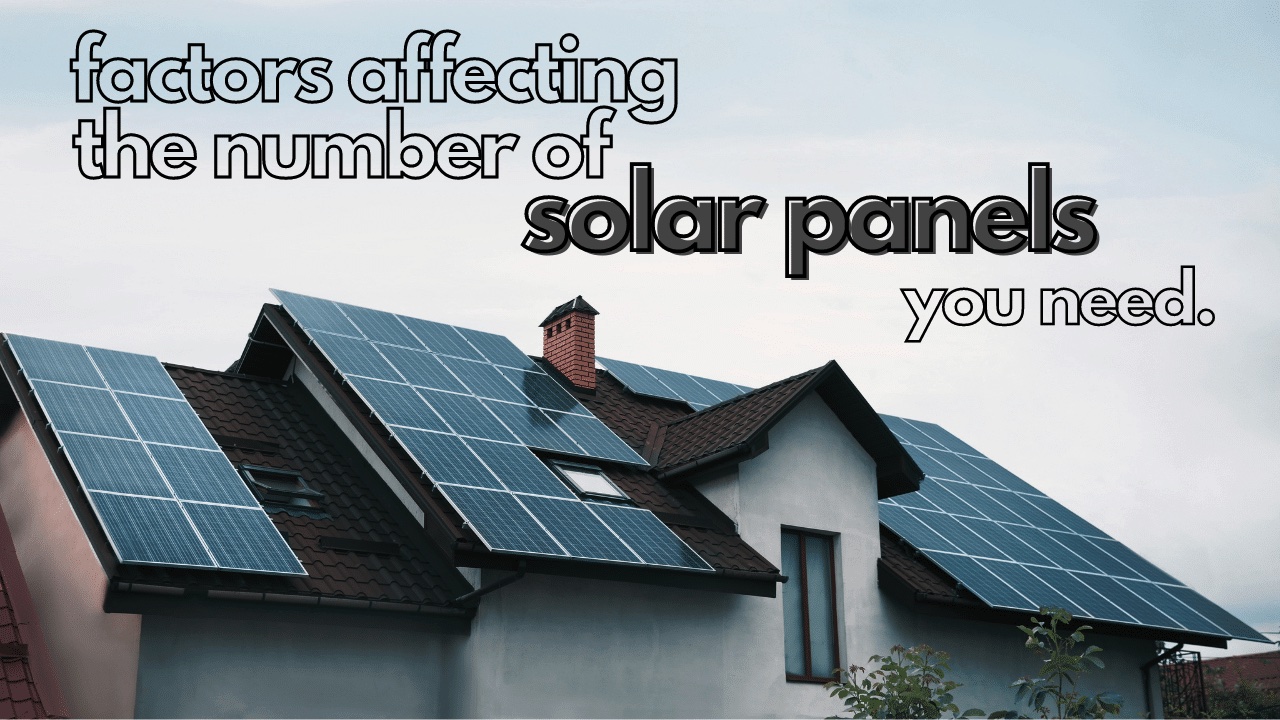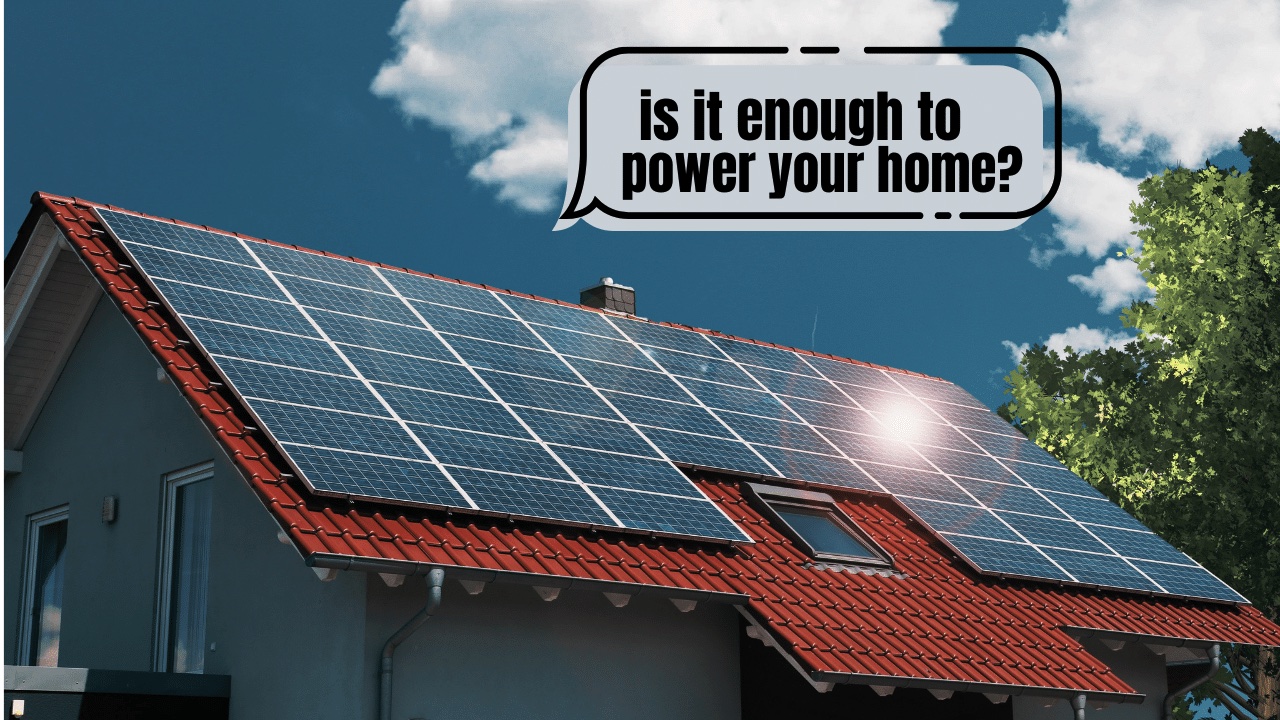If you’re thinking of installing a solar system at home, you’re probably wondering: how many panels do I need to power my home sufficiently?
Ultimately, every house is different, so you will need to calculate how many solar panels you require, based upon your current electricity consumption as well as the rating and production ratio of your prospective solar system. Of course, you also need to consider the space you have available at your home for solar installation, whether for a rooftop or ground-mounted system.
Let’s begin by ascertaining how many panels the average American needs to power their home, before looking at how to work out how many panels you can fit on your roof.
How Many Solar Panels Do I Need?
According to Energy Sage, the average home requires between 20 and 25 solar panels to offset its electricity bills with solar energy fully. Of course, this number depends on a range of factors, including:

Geographic Location
Areas that receive more sunlight throughout the day may not require as many solar panels to obtain the necessary energy to power your system. States like California and Florida are much more conducive to solar energy than Wisconsin and Minnesota, for instance.
Annual Electricity Usage
Thanks to the US Energy Information Administration, we know that the average American household uses 10,649 kWh of electricity every year. This figure covers appliance usage, charging of devices, lighting, etc. Naturally, homeowners who are less frivolous when it comes to electricity consumption will require fewer solar panels to power their homes.
Solar Panel Rating
Every solar panel is rated in terms of wattage, which refers to the electricity output of the panel under optimal conditions. Most solar panels have a wattage of between 250 – 400 watts of power. The higher the wattage of your individual panels, the less you will need to power your home.
Production Ratio
Another thing you need to consider is the production ratio of your solar panels. Most US panels have a ratio between 1.3 and 1.6, and this refers to the estimated energy output of your system (measured in kWh) and the size of your panels (measured in wattage). You can calculate the production ratio of a panel by dividing the output (10kW, for instance) by the size of the system (16w). In this example, the production ratio of your panels would be 1.6.
It’s important to remember that every solar system is unique, and to power your home adequately, you will need to conduct the necessary calculations. Here is a sample calculation that will help guide your research and enable you to establish the requirements for your system:
Number of panels = system size (10,649 kWh) / production ratio (1.6) / panel wattage (325)
This sum gives us a total of 20.48, which means we would need 21 solar panels to adequately power our home-based upon these calculations, which falls within the 20-25 range estimated by Energy Sage.
Frequently Asked Questions (FAQs)
As we now know, you will probably need to install somewhere between 20 and 25 solar panels on your roof to sufficiently power your home. So that begs the question: how many solar panels can I actually fit on my roof?
Ultimately, the number of panels that you can fit on your roof depends on how big your roof is! We know that the average PV module (panel) is approximately 5ft long and 3ft wide, and each weighs around 40 pounds.
Therefore, each panel requires about 15 square ft of space on your roof. To install 21 panels, you would need 315 square ft of space on your roof. Fortunately, you don’t need to measure your roof space yourself! Most solar installers will conduct a survey, ascertain how many panels can fit on your roof, and advise you accordingly.
Most homeowners assume that solar panels must be installed on the roof. But in reality, ground-mounted solar panels are equally as easy and cost-effective and are an excellent alternative if you don’t have sufficient roof space for the installation.
Of course, you will need to ensure that you have enough ground space to install the panels, but homeowners often find that ground-mounted systems are easier to maintain and equally as effective as those installed on the roof.
Generally speaking, homeowners tend to have too few solar panels to support their electricity consumption, as opposed to too many. But that doesn’t mean you should just cover your roof with panels and hope for the best.
As we’ve explored, you must work out precisely how many solar panels you need to cater for your electricity usage. Installing too many panels will be unnecessarily costly and will add excess weight to your roof for no reason.
More than forty states across America implement some form of ‘net metering’ system, which enables you to supply utilities with excess solar energy in exchange for credits. While you won’t become a millionaire by selling excess solar to the grid, it’s an efficient and environmentally friendly system that contributes to a more sustainable future for all.

Final Thoughts
Although we’ve established that the average American home needs between 20 – 25 solar panels to provide sufficient energy, you should only take this as a ballpark figure. Before installing solar panels, you need to do your sums and calculate precisely how many panels you require to sufficiently power your home.
Doing so will keep installation costs down and ensure that your system is tailored to your electricity usage, which means it will be fit for purpose. (Related: Is Solar Worth it For Your Home in Texas? (2023 Homeowner’s Guide))

